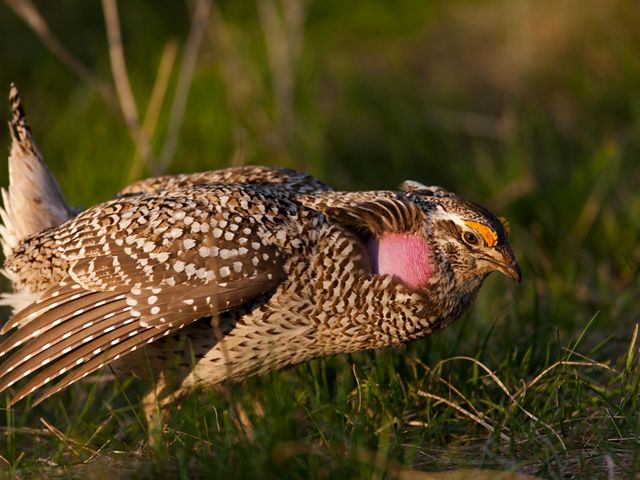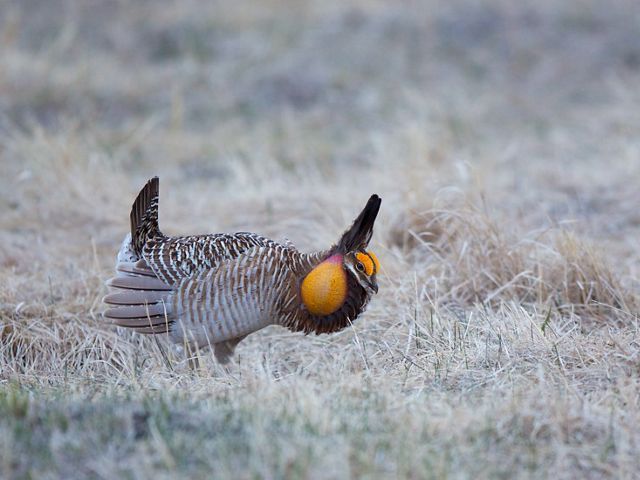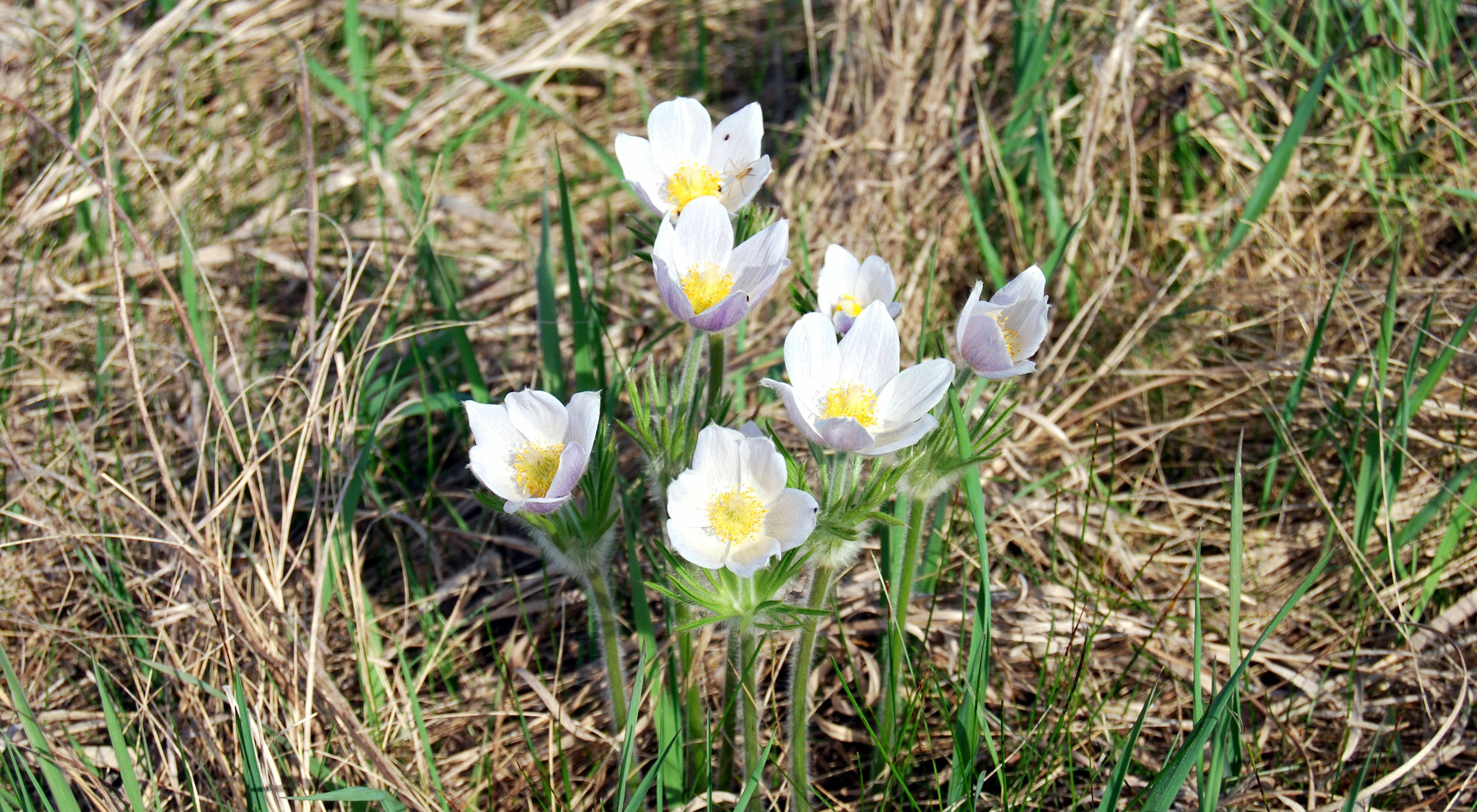April Nature Notes
April brings the beginning of wildflower season—plus, some spectacular courtship displays!
Winter’s cold is ending come April and even if there may be sudden snow, early wildflowers and courting birds remind us that spring is on the way!
A sure sign of spring—and fascinating to watch—are the courting displays of sharp-tailed grouse. These chicken-like birds gather at a lek, a patch of ground where males compete for the attention of hens by performing a dance display at dawn. Dancing grouse spread their wings, lower their heads, and raise the short bright yellow feathers above their eyes. The tail is also raised and spread like a fan. The birds then rush forward or turn in tight circles, rapidly stamping their feet and rattling their tail feathers. The males inflate and deflate prominent purple neck sacs, cooing and cackling. They also sometimes fight—within the lek, each bird has a small territory and those spots are hotly contested as hens may prefer males in some locations over others.


The birds’ performance typically lasts three to four hours and is best observed from a blind. Blinds can be reserved at no cost at Fort Pierre National Grassland, near Pierre, South Dakota. Dress warmly and enter your blind before sunrise so the birds won’t see you (it’s best to visit the blind the day before so you’ll know your way to it in the dark). You will be rewarded with a front-row seat for watching dancing grouse.

You might also be rewarded with an opportunity to watch dancing greater prairie chickens. These birds are much less common than grouse and are most often seen in the state’s central region. Their display is very different from sharp-tailed grouse but does include stamping feet, raised and fanned tails, hooting, cackling and squabbling. Their neck pouches are orange, not purple, and the birds make an odd call that can carry for miles on calm days, causing their leks to be called booming grounds. When not displaying, prairie chickens may be confused with sharp-tailed grouse, but they have distinctly different field marks that can be easily recognized.
Dancing grouse and prairie chickens are not the only early signs of spring in South Dakota’s grasslands.

Prairie crocus or pasqueflower (so named because it blooms around Eastertime), thrives on prairies with sandy soils. Good locations to search for pasqueflowers are TNC’s Altamont and Sioux prairies in eastern South Dakota. Look for the plants on dry, upland grasslands. Aldo Leopold, on the necessity of wild things, wrote in “A Sand County Almanac” that “…the chance to find a pasqueflower is a right as inalienable as free speech.” Find a pasqueflower and know unquestionably that spring has arrived on the prairie.

Need More Nature?
Sign up to receive monthly conservation news and updates from South Dakota. Get a preview of South Dakota's Nature News email.
